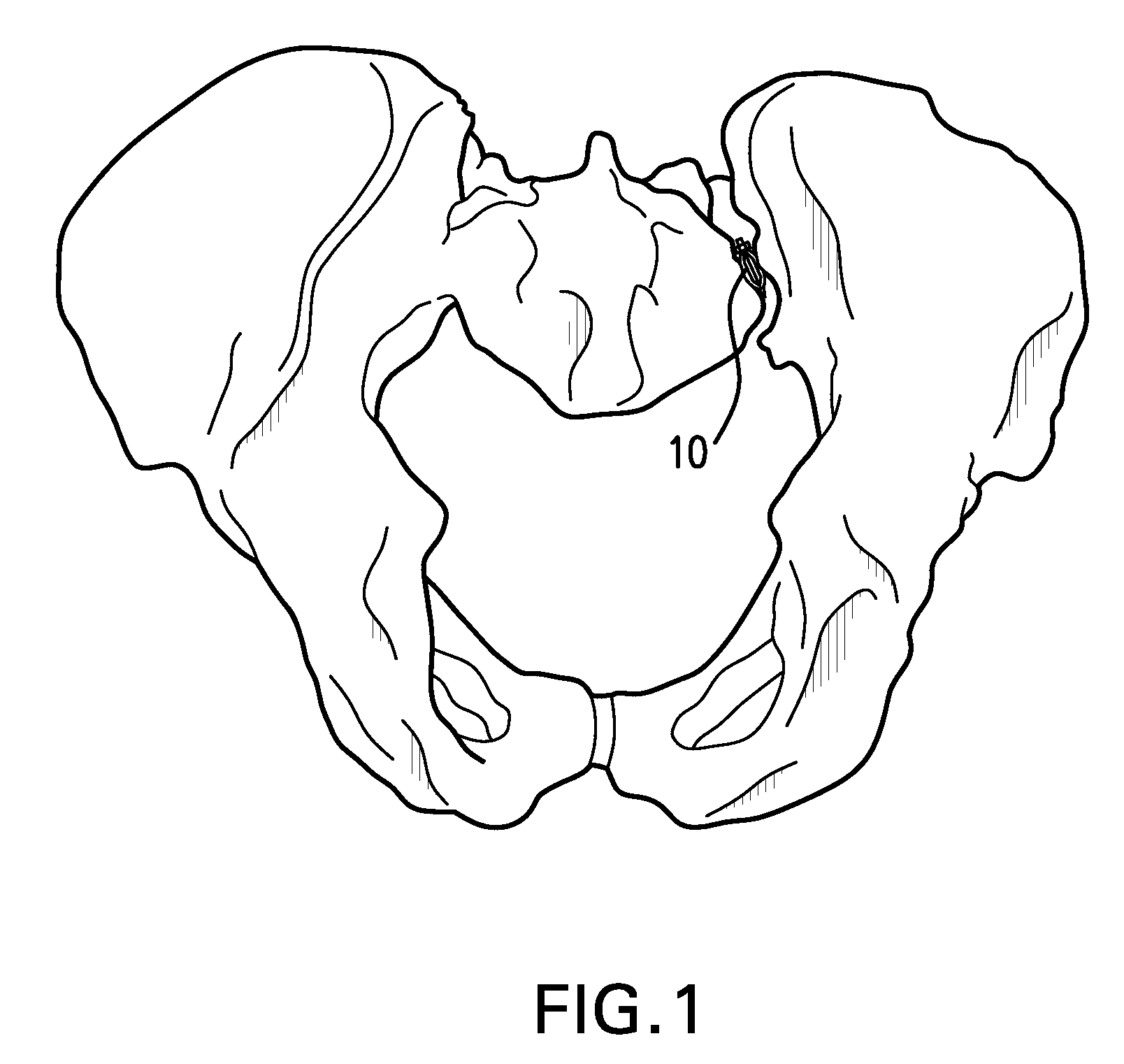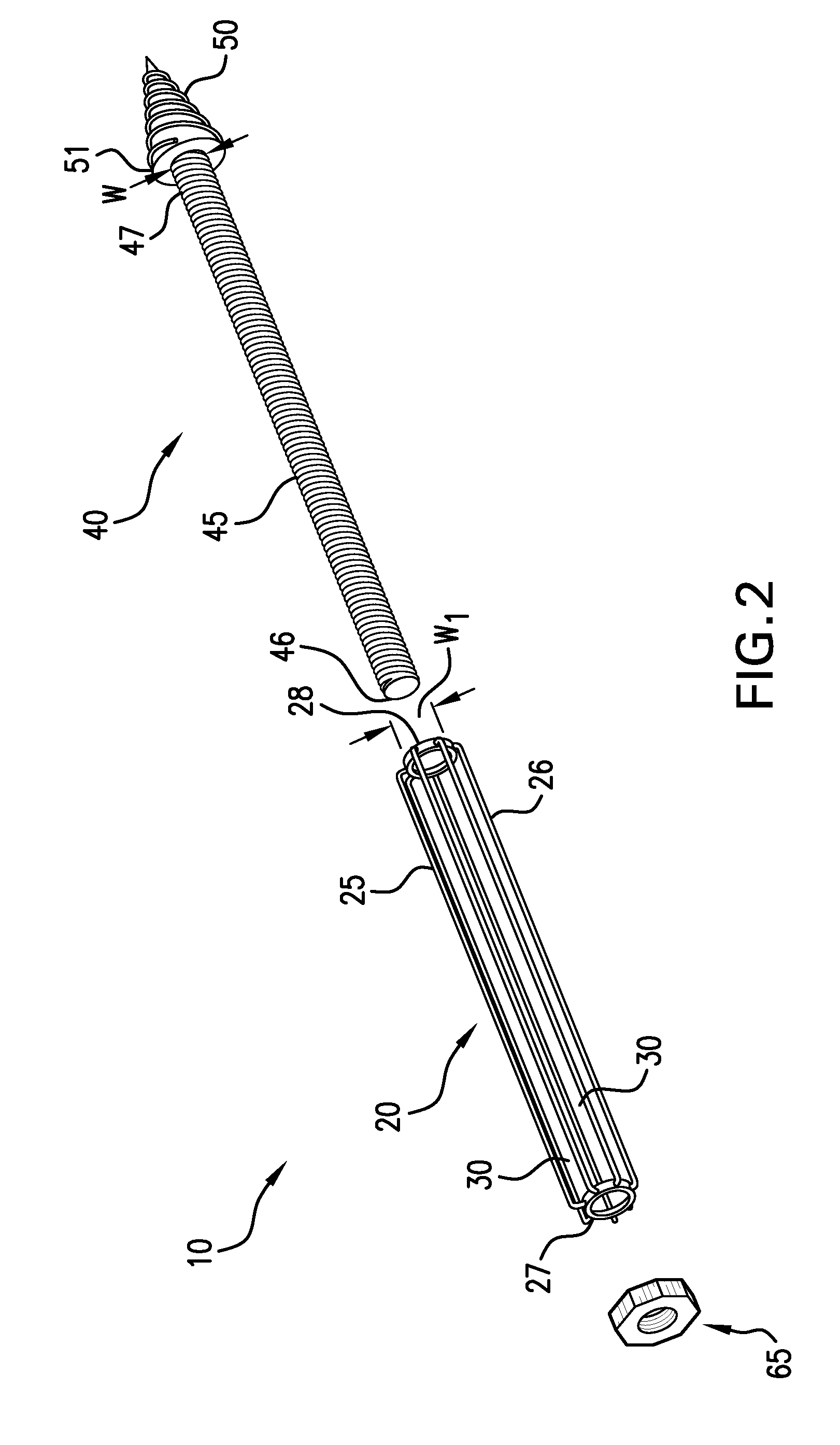Methods of stabilizing the sacroiliac joint
a sacroiliac joint and joint stabilization technology, applied in the field of sacroiliac joint stabilization, can solve the problems of degenerative arthritis pain, wear and tear of the joint, and the lower back is susceptible to injury, and achieves the effect of allowing fusion of the sacroiliac joint and not easily displaced
- Summary
- Abstract
- Description
- Claims
- Application Information
AI Technical Summary
Benefits of technology
Problems solved by technology
Method used
Image
Examples
Embodiment Construction
[0036]In general, the present invention provides methods of stabilizing the sacroiliac joint in a patient in need thereof using a device having an expandable portion that engages the sacral and iliac surfaces of the sacroiliac joint. Specifically, referring to FIG. 1, the methods involve generating laterally opposing forces against the iliac and sacral surfaces of the SI joint to securely seat a device 10 in a plane generally parallel to the SI joint. Prior methods, in contrast, involved disposing a bone screw perpendicular to the joint to direct compressive forces against the iliac and sacral surfaces to draw the surfaces closer together. The expandable portion of devices used in the methods of the present invention is either coated with or otherwise contains a bone material, such as bone graft or a substrate containing a bone morphogenic protein, to facilitate fusion of the joint. By stabilizing the sacroiliac joint, the methods of the present invention eliminate or reduce motion ...
PUM
 Login to View More
Login to View More Abstract
Description
Claims
Application Information
 Login to View More
Login to View More - R&D
- Intellectual Property
- Life Sciences
- Materials
- Tech Scout
- Unparalleled Data Quality
- Higher Quality Content
- 60% Fewer Hallucinations
Browse by: Latest US Patents, China's latest patents, Technical Efficacy Thesaurus, Application Domain, Technology Topic, Popular Technical Reports.
© 2025 PatSnap. All rights reserved.Legal|Privacy policy|Modern Slavery Act Transparency Statement|Sitemap|About US| Contact US: help@patsnap.com



